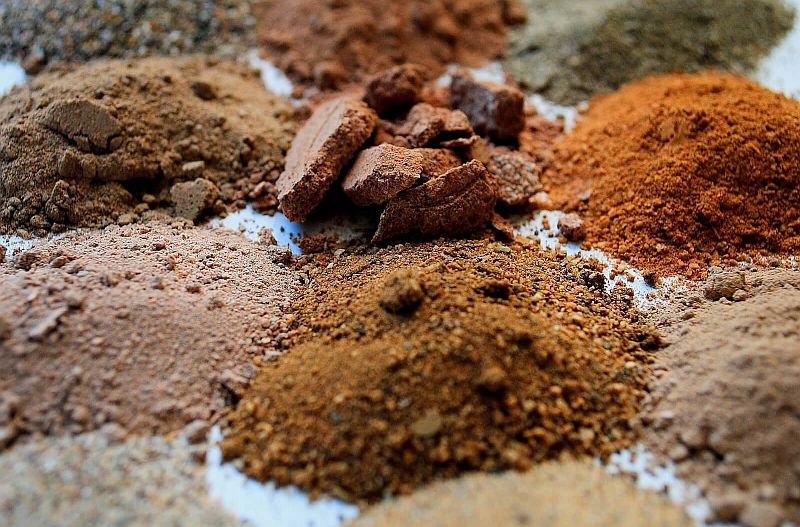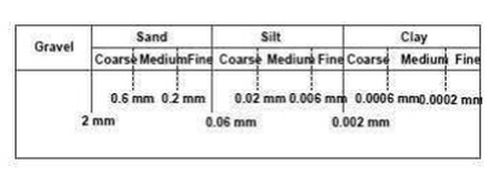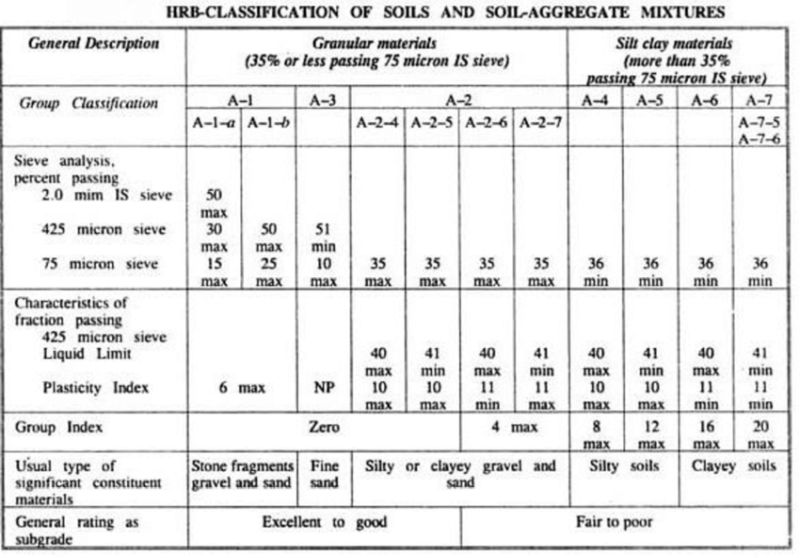
Soil Classification Based on Grain Size:
There are several soil classification systems based on grain size of soil, according to which soils have been classified as
- Gravel (>2 mm): These are the particles with little or no fines contributing to cohesion of materials
- Sand (0.1 –2 mm): These are the products of decomposition and weathering of rocks. Visually these are similar to gravel except presence of higher content of fines.
- Silt (0.01 –0.1 mm): These are finer than sand, brighter in colour and exhibit little cohesion
- Clay (< 0.01 mm): These are finer than silts. Clay soils exhibit stickiness, high strength when dry. Black cotton soils and other expansive clays exhibit swelling and shrinkage properties.
The most widely accepted grain size classification system is MIT soil classification system. The Bureau of Indian Standards (BIS) has also adopted the same limits as MIT system for the Indian Standard Classification System for soil grains. The limits of grain size are as follows.

Soil Classification Methods:
The various soil classification systems that have been used in the field of highway engineering are:
- Textural soil classification
- Burmister descriptive classification
- Casagrande soil classification
- Unified soil classification
- U.S Public Roads Administration (PRA) classification
- Highway Research Board (HRB) or revised PRS classification
- Federal Aviation Agency Classification
- Civil Aeronautics Administration classification
- Compaction classification
Highway Research Board (HRB) classification of soil:
The Highway Research Board (HRB) soil classification method is also called the Revised Public Roads Administration (PRA) soil classification system. With just three simple laboratory tests namely sieve analysis, liquid limit and plastic limit, it is possible to classify the soils.
The HRB soil classification system is generally adopted in highway engineering for the classification of subgrade soils. Soils are divided into seven groups A-1 to A-7. A-1, A-2 and A-3 soils are granular soils, percentage fines passing 0.075 mm sieve being less than 35. A-4, A-5, A-6 and A-7, soils are fine grained or silt-clay soils, passing 0.075 mm sieve being greater than 35 percent.
- A-1 soils are well graded mixture of stone fragments, gravel coarse sand, fine sand and non-plastic or slightly plastic soil binder. The soils of this group are subdivided into two subgroups, A-1-a, consisting predominantly of stone fragments or gravel and A-1-b consisting predominantly of coarse sand.
- A-2 group of soils include a wide range of granular soils ranging from A- 1 to A-3 groups, consisting of granular soils and up to 35% fines of A-4, A-5, A-6 or A-7 groups. Based on the fines content, the soils of A-2 groups are subdivided into subgroups A-2-4, A-2-5, A-2-6 and A-2-7.
- A-3 soils consist mainly, uniformly graded medium or fine sand similar to beach sand or desert blown sand. Stream-deposited mixtures of poorly graded fine sand with some coarse sand and gravel are also included in this group.
- A-4 soils are generally silty soils, non-plastic or moderately plastic in nature with liquid limit and plasticity index values less than 40 and 10 respectively
- A-5 soils are also silty soils with plasticity index less than 10%, but with liquid limit values exceeding 40%. These include highly elastic or compressible, soils usually of diatomaceous of micaceous character.
- A-6 group of soils are plastic clays, having high values of plasticity index exceeding 10% and low values of liquid limit below 40%; they have high volume change properties with variation in moisture content.
- A-7 soils are also clayey soils as Aindex, (LL greater than 40% and P1 greater than 10%). These soils have low permeability and high volume change properties with changes in moisture.

